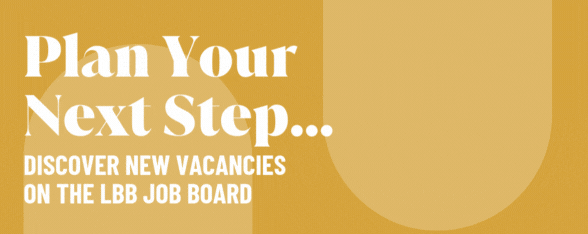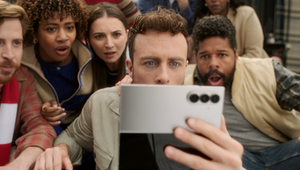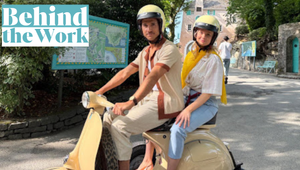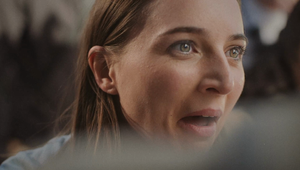
Camera Obscura: Olly Williams on the Ever Blurring Lines of the Process

Olly Williams is director a at Merman and a production designer at Vision Artists. He brings something different to the Merman roster with his keen eye for design, distinctive visual and narrative styles, often imbued with a subtle sense of humour.
Having made his name as one of the UK’s most highly regarded commercial production designers he offers an interesting, versatile and craft driven approach to everything he’s involved in.
LBB> What is your niche craft obsession?
Olly> I work as both a production designer and a director, and no matter which of those hats I happen to be wearing I draw constantly, from storyboard frames to sketches of sets to technical diagrams. That’s not exactly new though, the niche area I’ve got really sucked into is rendering concept visuals of exactly how I want the final image to appear on camera.
For me it’s a process that helps communicate exactly what I want and leaves no room for confusion. The entire film crew, from Art Dept to lighting, agency and client, know exactly what
I’m thinking, which makes everything much more streamlined on the day. If I’m designing then it means the director doesn’t need to worry about the set and if I’m directing then I can concentrate on performance.
LBB> Where/ when/ how did you first come across this thing?
Olly> I’ve been working as both director and designer for the best part of two decades, but technology has obviously changed massively in that time. I started off in the industry working with a good old fashioned pencil (the Pentel P209 Mechanical 0.7 HB was my weapon of choice) on a traditional drawing board with parallel motion.
Nowadays I start off sketching very quickly in Procreate on my iPad, then move into 3D in Sketchup - which is very fast and easy to use to work out basic geometry. I block the scene roughly with a director’s hat on and position the camera so I’m drawing to roughly the right lens I’m imagining for the scene. This means I can be economical with what I’m building, but also to create an integrated theatricality to the key shots. As I start working in finer detail I’ll add in textures, props and dressing. I then take everything into a program called Indigo Renderer where I work on the lighting, trying to bear in mind the practicalities of film lighting. I love going through this with a cinematographer but very often they’re not on the job until further down the line.
LBB> Was it an obsession straight away or something that has evolved over the years?
Olly> As a production designer I’ve been drawing in 3D for years, but it was originally more about quick construction drawings or blocking out rough frames, then I would draw details over the top by hand or often have to bring in a concept artist if I didn’t have time myself. In the last few years the increased speed of laptops, rendering capabilities, and the simple fact that I can just draw very fast now means I can get from a sketch to a fully lit photo real rendering in very little time.
LBB> How widespread do you think this obsession is with your peers?
Olly> Sketchup drawings have become a key tool in most Art Departments these days and an integral part of the filmmaking process. The ease of new rendering technology like Indigo and Vray means a lot of designers and concept artists are choosing to use these methods rather than painting visuals. I suspect that the big post houses view Sketchup as something like '3D for kids', but wherever I shoot in the world every art department, construction crew and model making company use it, which means that even if language translation is tricky, I can still send a model to a team in any country and turn up to find everything built as it should be.
LBB> What are the most interesting debates or conversations you are having around this obsession?
Olly> The lines are starting to become quite nicely blurred in the process from set design, shooting and lighting planning and digital matte extension. I’ll aim to have an image that shows everything exactly how I want it in the final frame, including colour grading and post. Having said that - it’s also really healthy to be able to use this as just a jumping off point for when we get on set with a camera. It’s always satisfying when the cinematographer frames something and lights something exactly as I’d planned it, but I don’t want to let ego get in the way, and just as often we’ll find something better on the day. Leaving this organic element of freedom to change things can be quite tricky for some clients who can’t 'unsee' a signed off design - and when that happens I sometimes wish I’d just stuck with an expressionistic charcoal sketch and some stick men drawings.
LBB> Can you share any examples of work where that obsession really came to the fore and elevated the final production? Can you tell us about it and share links if possible?
Olly> The Suzuki ‘Good Different’ campaign that I directed and designed for Iris Worldwide is a a great example. Every scene is drawn very precisely in 3D, textured and lit and framed after conversations with DoP Alex Barber. I sent the 3D files to local Art Director Emil Gigov at B2Y Productions in Bulgaria, and by the time we arrived a week before filming most of the sets and miniatures had been largely constructed and we could concentrate on honing the finer details.
We used the same initial Sketchup models to export 3D assets for Black Kite post to drop in for set extension. The entire process was really painless from start to finish as the very lovely agency and client knew exactly what the final image was going to look like before we’d started building, which meant that once we got to the set I could concentrate entirely on getting a great performance from the cast.
Below are some examples of the concept image and the final frames.
























